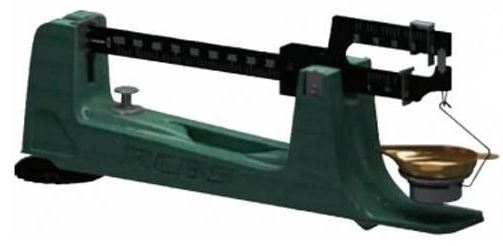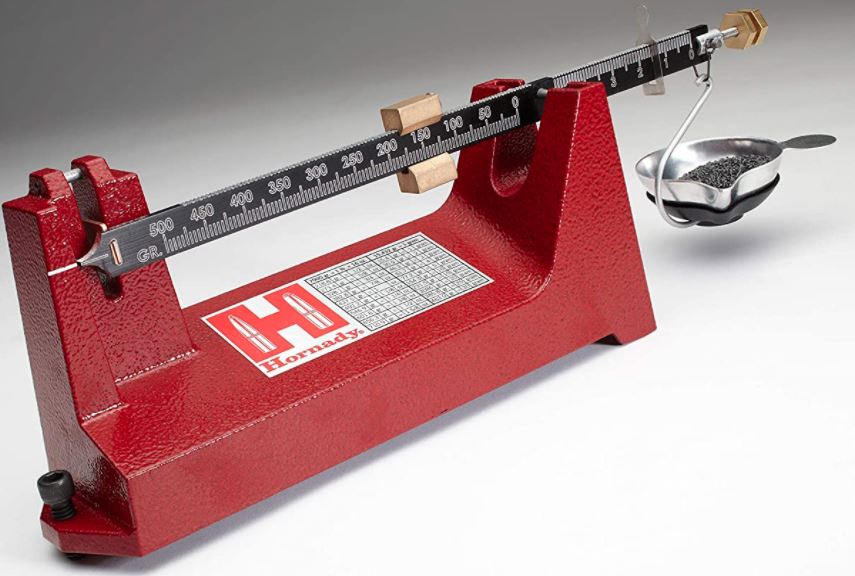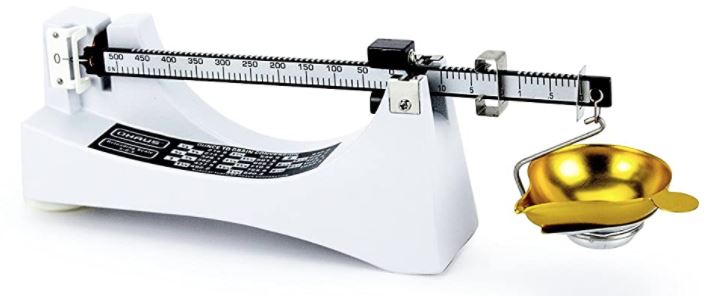If you spend a lot of time at the range, it’s easy to go through large amounts of ammunition. In an hour or two, you can find yourself going through hundreds of rounds. With larger cartridges, this can add up to hundreds of dollars. Ouch! As it turns out, much of the cost of ammunition doesn’t come from the bullets or the powder. It comes from the brass and the labor. With the right tools, you can reload your used cartridges, saving boatloads of money.
Not only that, but loading your own cartridges allows you to experiment in ways that you can’t with factory ammo. For instance, let’s say you go to your local gun dealer or sporting goods store. Even in a common caliber, you’ll be lucky to find more than five or six choices. This is just fine if you’re hunting or buying ammo for home defense. But for target shooters – particularly competitive shooters – even ten or twenty choices might not be enough. With a reloading kit, you can use exactly the bullets you want with exactly the amount of powder you want.
Of course, all that effort will be wasted if you don’t have an accurate way to measure your powder. If your “150-grain” rounds are actually 145-grain or 155-grain, you won’t get the results you want. That’s why it’s important to use a good quality scale for measuring out your powder. Your reloads will be more consistent, and your rounds will land on target.
Today, we’re going to review three of the best manual powder scales for reloading. First up, we’ll be checking out the RCBS M1000 Magnetic 98916 Powder Scale. This is a heavy-duty magnetic scale with a large, 1,000-grain capacity. Second, we’ll be examining the Hornady 050109 Lock-N-Load Balance Beam Scale. This scale is almost as big as the RCBS model, and is accurate down to 0.1 grains. Finally, we’ll tackle the OHAUS 30393272 5-0-5 Reloading Scale. This is a smaller scale, but it’s still nice and sturdy, and is also accurate to 0.1 grains. What sets these scales apart? Let’s find out!
How to Choose a Mechanical Reloading Scale
So, what makes one reloading scale better than another? Let’s go over a few things you should be looking for while you’re putting together your reloading kit.
Mechanical or digital
Many people use digital scales for reloading. The advantage of a digital scale is that it’s smaller than a manual scale and easier to keep clean. You can even throw it in a drawer when it’s not in use, whereas a manual scale can occupy half a table. On the other hand, mechanical scales are more accurate, and calibration issues are easier to diagnose. Which type is “best” is a matter of preference, but we’re focusing on mechanical scales today.
Capacity
How much powder can you measure at once? Are you manually loading a single cartridge at once, or filling the hopper on an automatic press? More isn’t necessarily better, but it does give you more options. On the other hand, the larger the capacity, the longer the beam needs to be, which means a larger scale.
Accuracy
Reloading scales need to be more accurate than many types of scale. For instance, kitchen scales are meant to measure things within a few hundredths of an ounce. This is just fine if you’re baking bread, but it’s nowhere near accurate enough for a reloading scale. If your accuracy is off by half a grain or more, your load quality will suffer noticeably. For the best results, look for a scale that’s accurate to at least 0.1 grains.
Durability
Reloading equipment is an investment. If it’s going to pay off, you want to use your gear for years to come before spending money on replacements. Do yourself a favor and get a scale that can handle a bit of abuse. This doesn’t mean buying the most expensive scale money can buy. But if it’s made of plastic, give it a hard pass. Not only is plastic easy to break, but it can also soften in heat and get misshapen. This can ruin a scale’s accuracy.
Cost
As we said, reloading equipment is an investment. Don’t sell yourself short by buying the cheapest tools you can find. That said, you don’t need to spend a fortune. Shop around, and look for good quality gear that fits your budget. It won’t be dirt cheap, but it doesn’t have to break the bank, either.
How to Use a Manual Reloading Scale
A manual reloading scale is fairly simple to use. Start out with the bowl empty, and set the poise to 0. The poise is the block that slides back and forth across the beam. At this point, the beam should be perfectly level. If it’s not, check your manufacturer’s instructions on how to calibrate your scale. Once that’s done, move the poise to the load you want.
For example, if you’re dispensing a single 150-grain load, set the poise to “150”. Now, begin adding powder to the bowl. Add it slowly, until the beam is totally level. If you add too much, simply scoop out a little at a time until the beam returns to level.
Manual Reloading Scale Maintenance
A manual reloading scale might have an industrial appearance, but it’s actually a finely-tuned machine. Think about it. You’re weighing small amounts of lightweight powder. A variance of one grain can affect where your bullet lands, and a grain is only 0.0023 ounces. If you don’t take care of your scale, it can easily be off by this small amount and ruin your load.
The first thing you should do is remove all dust after you weigh your powder. Residual dust will affect the total weight in the bowl, and throw off your readings. The same goes for any dust on the beam. If you’re using the scale for a long period, wipe it down periodically. Powder can accumulate between individual measurements as well as between loading sessions. Make sure to use a dry cloth when you do this. A damp cloth or oiled cloth will also throw off your readings.
Each time you use your scale, you’ll probably need to calibrate it. This simply means ensuring that the scale is reading accurately. The easiest way to do this is to check whether or not the scale reads “0” when the bowl is empty. If it doesn’t, you’ll need to adjust the counterweights until it does. Depending on the scale, exactly how you do this will be different. If you want to be super-precise, you can use a check weight set to calibrate at different weight levels. This shouldn’t be necessary for most people. But if you want to produce the world’s most finely-tuned rounds, it’s always an option.

RCBS M1000 Magnetic 98916 Powder Scale
The RCBS M1000 Magnetic 98916 Powder Scale has the largest capacity of any scale on our list. It can weigh out up to 1,000 grains at a time. That’s obviously far more than you’ll ever use for a single cartridge. However, if you’re filling a large automatic reloader hopper, you’ll be able to do the job quickly.
The base is big and beefy, and is constructed from cast iron. It has a wedge-shaped design, with the fat end of the wedge at the back end of the boom. This makes the M1000 well-balanced, so it’s difficult to tip over. The beam itself is black, with a black poise. A little more contrast would have been nice here, but it’s not too big a deal. The measuring bowl itself has a long spout, which makes it easy to pour into small openings.
Calibration is performed with a simple thumb screw. Simply tighten or loosen it as needed until the beam is level. If you’re nowhere near level, you can also move a pair of counterweights. There’s a smaller weight on the bottom for fine adjustments, and a larger one on top for bigger adjustments.

Hornady 050109 Lock-N-Load Balance Beam Scale
To shooting enthusiasts, Hornady needs no introduction. Everyone knows they make the best target ammo, bar none. That’s why many professional target shooters use Hornady rounds. But many people don’t realize that Hornady also manufactures reloading equipment. In fact, we’ve reviewed their digital reloading scale in the past.
The Hornady 050109 Lock-N-Load Balance Beam Scale is a rough and tumble unit, constructed from red-painted cast iron. This makes it heavier than many other comparable 500-grain scales. However, it also makes it more stable, so you don’t have to worry about spilling your powder. The beam is black, with a brass poise that really pops. The white markings are easy to read, and the aluminum bowl is easy to use.
This is one of the more precise scales on the market, with an accuracy of plus or minus 0.1 grain. In addition, the back end of the beam has a magnetic damper that keeps it from floating around. Once you’ve added or removed weight, the beam will settle into place. When it comes time for calibration, there are two options. A small aluminum counterweight rests on top of the beam for fine adjustments. For larger adjustments, there’s a brass hex nut that can be screwed in or out on the tip of the beam.

OHAUS 30393272 5-0-5 Reloading Scale
OHAUS isn’t terribly well-known in the target shooting world. However, they’re very well-known in the industrial world, where they produce all kinds of measuring equipment. In the past, we’ve reviewed their carat scales, mechanical balances, and even their moisture balance analyzers.
The OHAUS 30393272 5-0-5 Reloading Scale is more compact than the others on our list, which allows for easier storage. The downside is that it’s slightly less stable, but we should strongly emphasize the word “slightly”. The base is constructed from heavy, die-cast steel, which provides plenty of heft for good balance. If that’s not good enough, a built-in leveling foot should even things out for you. The beam is made of black aluminum, but has black and white high-visibility faceplate for easy reading. A black poise clearly indicates what weight you’re reading.
The overall capacity is 500 grains, enough for most reloaders. More to the point, the 5-0-5 is accurate to 0.1 grains, ensuring a precise load. Calibration is performed with a pair of aluminum weights. One is larger and one is smaller, so you can make both fine and coarse adjustments.
Final Verdict
As you can see, these are three excellent scales. But each one of them offers slightly different benefits and drawbacks. Let’s go over what we’ve learned, and render a final verdict.
The first scale we looked at was the RCBS M1000 Magnetic 98916 Powder Scale. This is the largest scale on the list, with a 1,000-grain capacity. As such, it’s best for measuring large loads, such as filling a hopper for an automatic press. If you need to measure out a lot of powder as quickly as possible, it’s an excellent choice.
The Hornady 050109 Lock-N-Load Balance Beam Scale strikes an excellent balance between durability and accuracy. It’s big and beefy, and the bulk of the unit is constructed from cast iron. This makes it very stable. It’s also finely engineered, with an accuracy of 0.1 grains. Not only that, but you can calibrate it in two different ways, and the overall capacity is 500 grains. For general-purpose use, this is our top choice.
The OHAUS 30393272 5-0-5 Reloading Scale is more compact than the Hornady, but it’s just as durable. The die cast metal base is more than heavy enough to keep it stable, and it still has a weight limit of 500 grains. Moreover, it’s also accurate to 0.1 grains. So, why not choose the OHAUS over the Hornady, seeing as it’s smaller? The difference is that the Hornady has better calibration weights, and is slightly more stable. Still, if space is tight, the OHAUS remains a great choice.
Meet Ry, “TechGuru,” a 36-year-old technology enthusiast with a deep passion for tech innovations. With extensive experience, he specializes in gaming hardware and software, and has expertise in gadgets, custom PCs, and audio.
Besides writing about tech and reviewing new products, he enjoys traveling, hiking, and photography. Committed to keeping up with the latest industry trends, he aims to guide readers in making informed tech decisions.

